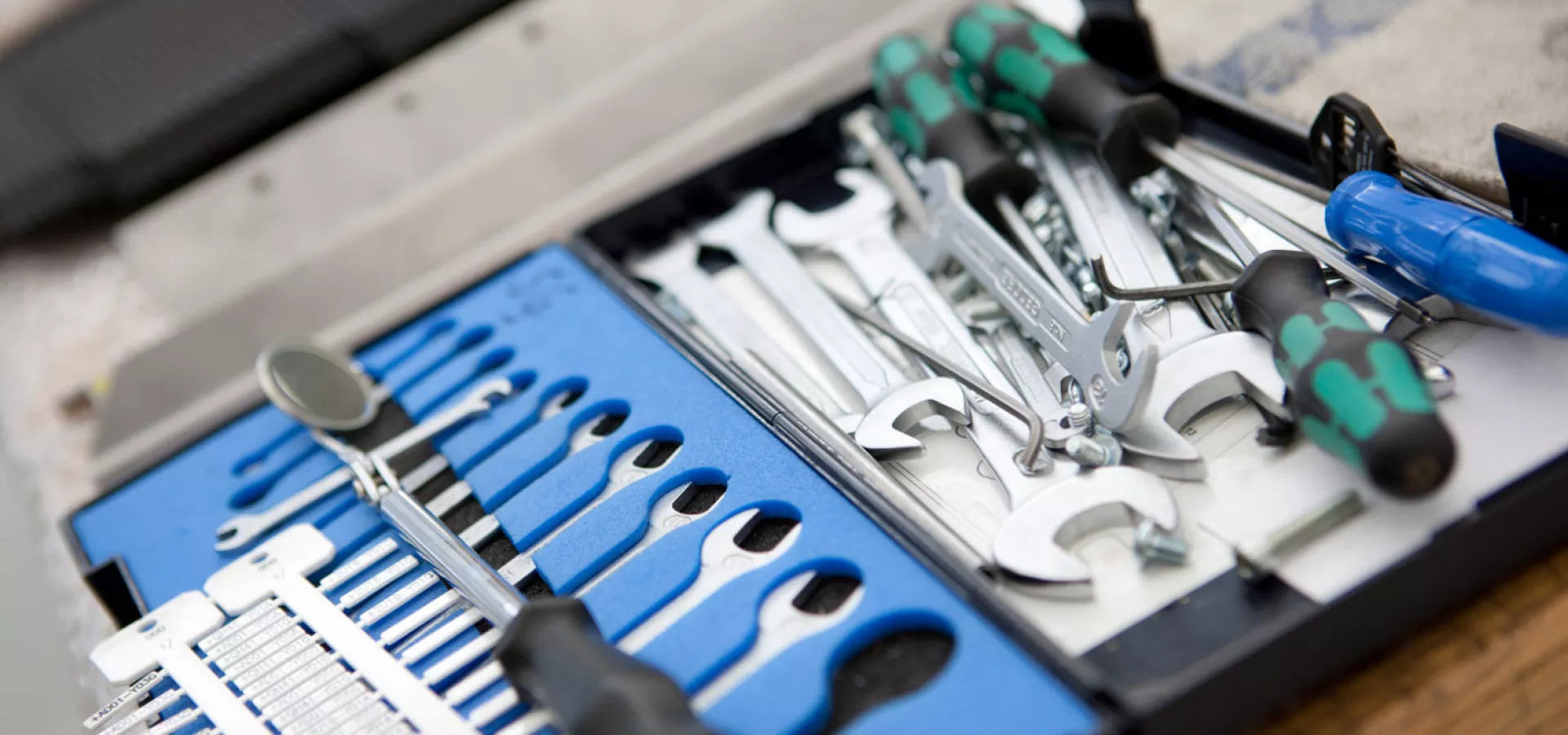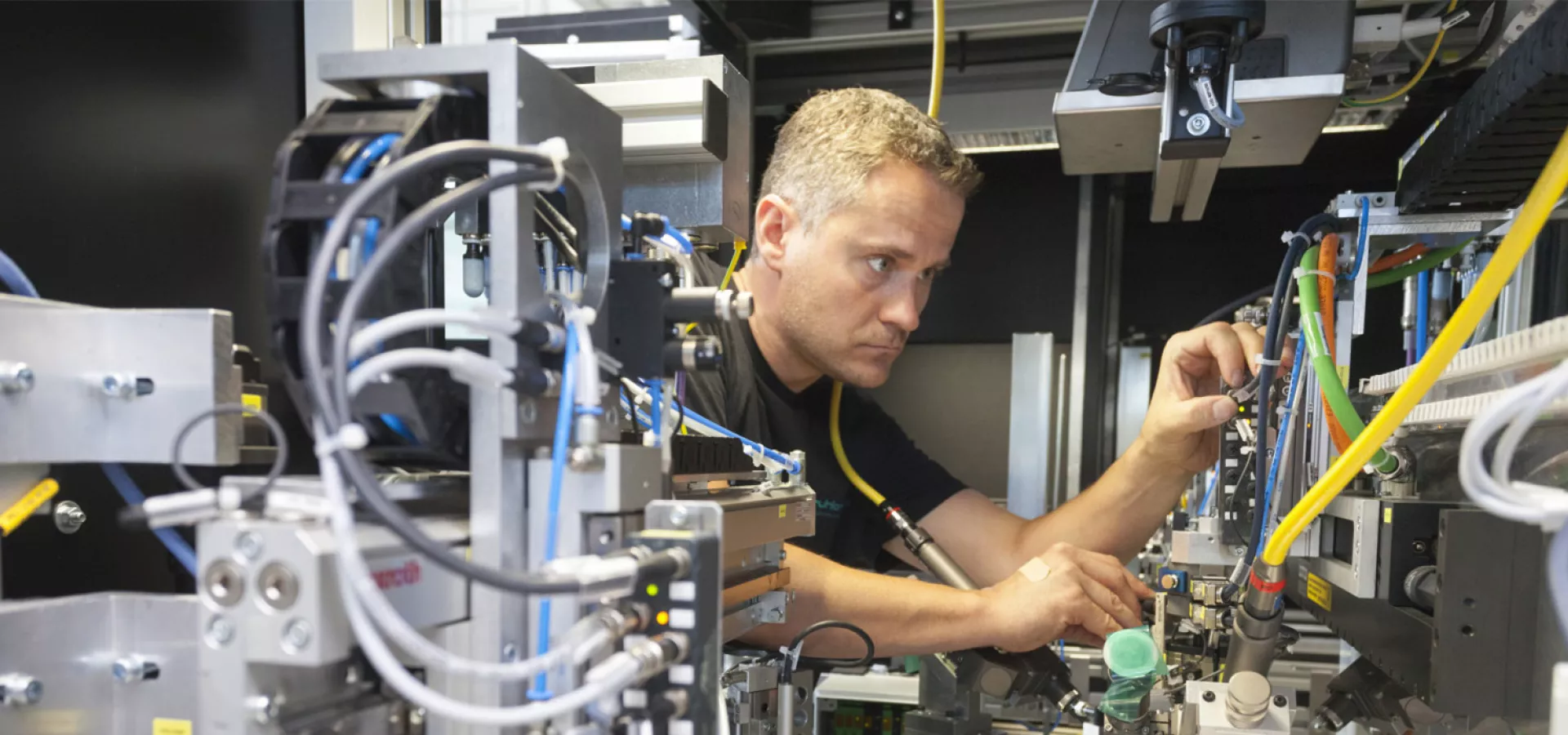
Personalizing cards—the technology behind it (Part 2)
It is difficult to imagine daily life without them. They are used everywhere as debit cards, season tickets for swimming pools or student ID cards: plastic cards with an integrated microchip. They save our most important personal data and make it available at a moment’s notice.
But how does this technology work and how are these cards created?
In a previous blog post, we described external characteristics and various printing methods. Now we want to take a look into the inner workings of smart cards to provide an insight into their industrial production. For purposes of simplicity, we will first describe older conventional contact cards.
The make-up of a contact smart card
Basically, a smart card (Integrated Circuit Card [ICC]) consists of a carrier material (in the form of a plastic card) with a molded cavity. In this cavity, an integrated circuit such as a microcontroller is glued. This is then connected using wire bonds to a contact surface and is surrounded by an encapsulant (special epoxy resin). This potting compound, also known as glop-top, protects the sensitive wire bonds and the chip body against environmental influences such as moisture and mechanical stress.
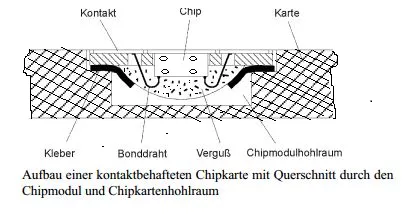
Since in industrial mass production fast curing is desired, UV curable encapsulants are now chiefly used (about 90% of all cards). In order for hardening to take place, the potting compound must be transparent. Alternatively thermosetting encapsulants can be used, which do not have to be transparent, but with a curing time of up to three minutes, they are much too slow for mass production—not to mention the cured mass is relatively brittle. Modern UV curing encapsulants only require about 30 to 40 seconds for curing, which is much closer to the specifications of chip module manufacturers. With modern casting machines, which use LED technology rather than UV discharge lamps, low curing and start-up times make it possible to produce up to 40,000 modules per hour.
Types of chip cards
Depending on usage, different types of chips are utilized. They are differentiated by the type of data storage, processor and reading device interface.
Memory cards
The simplest form of a chip card is the memory card. It normally consists of no more than one type of non-volatile memory, security logic and an interface for input and output of data.
EEPROM (Electrically Erasable Programmable Read-Only Memory) is typically used and consists of memory cells that can be electrically programmed as well as erased while retaining their content even after switching off the current. EPROM (Erasable Programmable Read-Only Memory) was previously used and works similarly, but can only be deleted by means of UV radiation, which makes all modifications, such as a simple address change, very difficult.
Microcontroller Cards
Microcontroller chip cards include a microcontroller, which is constructed like a small computer, as well as various types of memory and a central processor (CPU).
CPU = Central Processing Unit
As the name suggests, the CPU, or central processing unit of a microcontroller, is used to process, order and verify saved or output data according to predetermined standards. In this manner, microcontroller cards offer significantly greater functionality and increased tampering security than a simple memory card.
Besides the above-mentioned microcontrollers, there are other memory types:
ROM = Read Only Memory
ROM has a fixed content that cannot be changed, which was specified during the manufacturing process of the chip (for example, BIOS on PCs was originally on a ROM, but today EEPROM is used often).
RAM = Random Access Memory
RAM is volatile memory that can be electrically reprogrammed and used during operation as user memory.
Using RFID technology (Radio Frequency Identification), modern smart cards allow for contactless reading. Current credit cards combine both technologies making contactless and conventional contact payments possible. Modern production mechanisms make it possible to arrange all of the electronics (with contactless smart cards including an antenna interface) on thin film, so-called RFID-inlays (also called smart labels). Integrated microcontroller chips can be replaced by a central microprocessor chip with circuits in order to achieve higher computing speeds for demanding applications (similar to the internal configuration of a PC). Coprocessors are especially used to encrypt sent and received data to supplement the CPU.
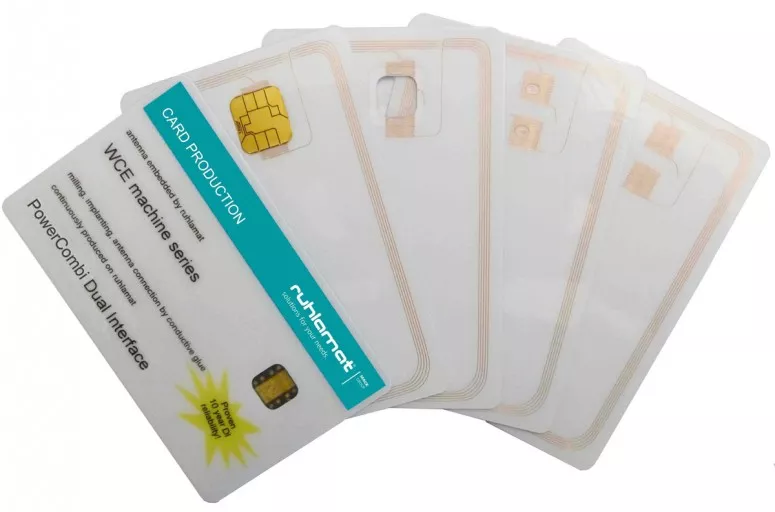
Usage examples
Phone cards
Phone cards are usually memory cards with security logic. The first phone cards, which were introduced France, utilized EPROM and were gradually devalued through usage.
Bank cards (electronic cash)
EC-cards are commonly equipped with a magnetic stripe. However, this only stores static information and thus does not provide the possibility of reliable identification and can also be copied easily. Because of this, all newly issued cards have been equipped with an additional chip since 2000. As opposed to a magnetic stripe, this chip can answer reader device inquiries, such as securing a payment by PIN. The data stored on the chip cannot be completely read, thus making it much more difficult to copy. In Germany, it has been necessarily to use the chip for the electronic cash since 2011.
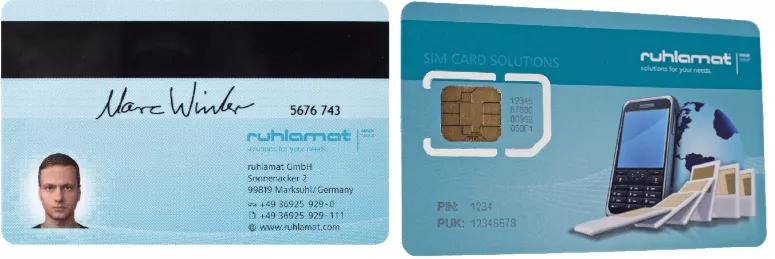
Health insurance cards
German health insurance cards used until 2014 only included information relevant for to the physician for billing purposes, which entitled the cardholder to doctor visits and only required a simple memory chip. The new cards, which entirely replaced the old ones in January of 2015, contain a microcontroller and allow for functions other than billing. They contain additional data such as medical history, blood type, allergies and other emergency information.
GSM-cards
GSM (Global System for Mobile communication) is the name of the European standardized cellular network, which is also used in some Asian and African countries. GSM-standards require the identification of a subscriber to a network using a Subscriber Identification Module (SIM) in the form of a microcontroller card. A SIM contains the necessary intelligence for the identification of a subscriber and, depending on the type, other additional auxiliary functions.
If you are interested in other card system and chip module technologies, please contact us at any time!
